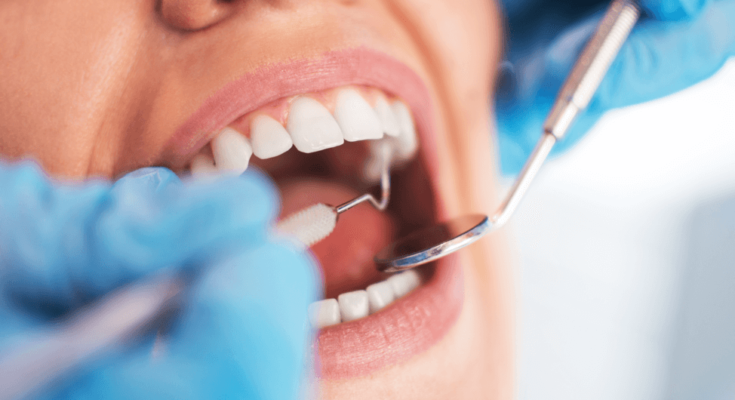Dental health is an integral part of our overall well-being, yet it is often overlooked or misunderstood. From the gums that hold our teeth in place to the grins that we proudly show off, every aspect of our dental health deserves attention and care. In this comprehensive guide, we’ll explore the fundamentals of dental health, offering insights and tips to help you maintain a healthy mouth and a radiant smile.
Understanding the Anatomy of Your Mouth
Before delving into dental health practices, it’s crucial to understand the basic anatomy of your mouth.
1. Teeth
- Types and Functions: Our mouth houses different types of teeth, including incisors, canines, premolars, and molars, each serving a unique purpose in eating and speaking.
- Structure: Each tooth comprises the crown (visible part), the root (embedded in the gum), enamel, dentin, and the pulp.
2. Gums
- Role: Gums, or gingiva, are the soft tissues that support and protect our teeth.
- Health Indicators: Healthy gums are firm and pink. Swollen, red, or bleeding gums can be signs of gum diseases like gingivitis.
3. Tongue, Cheeks, and Palate
These parts not only aid in the process of eating and speaking but also play a role in maintaining oral hygiene by helping to clean our mouths.
The Importance of Oral Hygiene
Dental health is based on practicing good oral hygiene.
1. Preventing Tooth Decay and Gum Disease
- Plaque and Tartar: Plaque, a sticky film of bacteria, can harden into tartar, leading to cavities and gum disease.
- Regular Cleaning: Brushing and flossing regularly can prevent the buildup of plaque and tartar.
2. Fresh Breath
Bacteria Control: Good oral hygiene helps control the bacteria that can cause bad breath.
Daily Dental Care Practices
1. Brushing
- Toothbrush Care: Replace your toothbrush every three to four months or sooner if the bristles are frayed.
2. Flossing
- Importance: Flossing removes food particles and plaque from between teeth that a toothbrush can’t reach.
- Method: Gently slide the floss between your teeth and curve it around each tooth, moving it up and down.
3. Mouthwash
Benefits: Mouthwash can help reduce plaque, prevent or reduce gingivitis, reduce the speed of tartar formation, or provide a combination of these benefits.
Eating for Dental Health
The maintenance of dental health is significantly influenced by your diet.
1. Foods to Embrace
- Calcium-Rich Foods: Dairy products, leafy greens, and almonds are great for strengthening teeth.
- Crunchy Fruits and Vegetables: Apples, carrots, and celery help clean teeth naturally.
2. Foods to Avoid
- Sugary Foods and Drinks: Sugar feeds the bacteria in plaque, leading to tooth decay.
- Acidic Foods: Citrus fruits, tomatoes, and coffee can erode tooth enamel over time.
Professional Dental Care
Regular visits to the dentist are essential.
1. Routine Checkups and Cleanings
- Frequency: Visit your dentist at least twice a year for checkups and professional cleanings.
- Preventive Care: These visits can help catch problems early when they’re easier to treat.
2. Restorative Treatments
- Fillings, Crowns, and More: When problems are detected, treatments like fillings, crowns, or root canals may be necessary.
Dental Health and General Health: A Connection
Dental health is not isolated; it’s linked to your overall health.
1. Heart Disease and Stroke
- Bacteria and Inflammation: Some studies suggest that heart disease and stroke may be linked to inflammation and infections caused by oral bacteria.
2. Diabetes
- Gum Disease: People with diabetes are more susceptible to gum disease, which in turn can affect blood sugar control and contribute to the progression of diabetes.
3. Pregnancy
Oral Health and Pregnancy: Poor oral health can have implications during pregnancy, including the risk of premature birth and low birth weight.
Innovations in Dental Care
Advancements in technology and methodology are continually shaping the future of dental care.
1. Digital Dentistry
- 3D Printing: Used for creating precise dental implants and crowns.
- Digital X-rays: Offer lower radiation and immediate imaging, enhancing diagnostic accuracy.
2. Laser Dentistry
Applications: Used for various procedures, including cavity treatment and gum reshaping, often with less pain and faster healing.
3. Teledentistrys
- Remote Consultations: Offers the convenience of consultations and follow-ups from home, making dental care more accessible.
Common Dental Problems and Solutions
Understanding common dental issues can help in their prevention and treatment.
1. Tooth Decay and Cavities
- Prevention: Regular brushing, flossing, and avoiding sugary snacks.
- Treatment: Fillings, crowns, or in severe cases, root canals.
2. Gum Disease
- Stages: Begins as gingivitis, can progress to periodontitis if untreated.
- Management: Professional cleanings, improved home care, and in severe cases, surgery.
3. Tooth Sensitivity
- Causes: Worn enamel, exposed roots, cavities, or gum disease.
- Remedies: Specially formulated toothpaste, fluoride treatments, or dental procedures depending on the cause.
The Role of Lifestyle in Dental Health
Lifestyle choices can significantly impact dental health.
1. Smoking and Tobacco Use
- Risks: Increases the risk of gum disease, tooth loss, and oral cancer.
- Quitting: Quitting tobacco use can significantly reduce these risks.
2. Alcohol Consumption
Effects: Excessive alcohol consumption can lead to a dry mouth and other oral health issues.
3. Stress
Impact: Stress can lead to teeth grinding, which can cause tooth damage and other oral health problems.
Dental Health Myths Debunked
Dispelling common myths to ensure better dental health practices.
1. Myth: Sugar is the Only Cause of Cavities
Truth: While sugar plays a significant role, cavities are caused by bacteria that feed on various carbohydrates.
2. Myth: Hard Brushing Means Cleaner Teeth
Truth: Hard brushing can damage enamel and gums. Gentle, thorough brushing is more effective.
3. Myth: If Your Gums Bleed, It’s Best Not to Brush Them
Truth: Bleeding gums can be a sign of gingivitis, and it’s important to keep brushing gently and see a dentist.
Conclusion: A Lifetime Commitment to Dental Health
Dental health is a lifelong journey that requires consistent care and attention. From daily brushing and flossing to regular dental checkups, each step plays a crucial role in maintaining a healthy mouth. By understanding the basics of dental health, embracing good oral hygiene practices, and staying informed about the latest advancements and trends, you can ensure that your gums stay healthy and your grins stay bright. Remember, a healthy mouth is not just about a beautiful smile; it’s about a healthier you.




